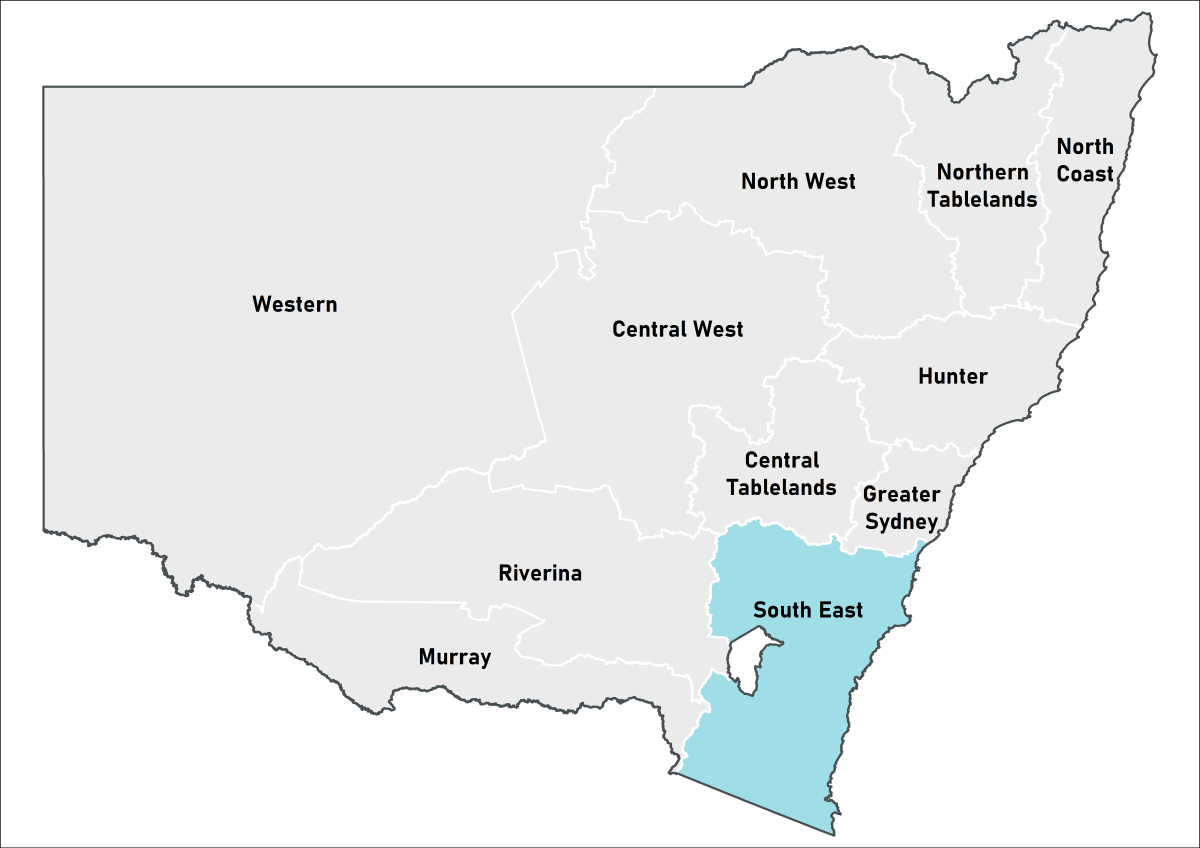March 2024

 South-East Local Land Services
South-East Local Land Services
Drought conditions continue for parts of the South East region, with average to below average rainfall impacting recovery.
- The Combined Drought Indicator (CDI) shows approximately 35% of the region in the one of the drought categories at the end of March.
- Rainfall has aided recent improvements in conditions however there is large variability in production conditions across the region. Drought conditions have persisted in parts of the east for over 6 months. Further rainfall is critical to trigger recovery in these regions.
- Other locations have shown a response to recent rainfall, with a transition out of the Drought category.
Rainfall has been ineffective in triggering a strong pasture growth response or improving soil moisture levels for many locations. - The decision-making environment continues to be challenging for many farmers in the region. Producers continue to monitor forecasts closely and implement drought management strategies as required for their enterprises.
- The NSW DPI continues to closely monitor conditions in this region.
Click on the scroll bar below the map to compare with previous months.
Normalised Difference Vegetation Index
Plant greenness values have remained generally steady since the February Update.
- Many areas continue to experience near normal to higher-than-normal plant greenness levels.
- This has been driven by average to above average rainfall across most of the region.
- Areas with below average levels of greenness indicate low levels of ground cover and standing dry matter available for livestock.
- Some of the extremely negative NDVI areas (brown patches) are water bodies.
Click on the scroll bar below the map to compare with previous months.
Individual Drought Indicators
Drought indicators in decline at some locations.
- The Drought History charts show the individual response of the drought indicators at Bega, Cooma and Goulburn.
- The indicators at Gundagai and Temora have declined over the last couple of months due to short-term rainfall deficits. Both areas remain in the Non-Drought category.
- At Hay, all indicators are responding well to rainfall events over the summer and early autumn period.
- Producers continue to monitor conditions closely in conjunction with forecasts and outlooks.
- To access a Drought History chart for your Parish, visit the Seasonal Conditions Information Portal.


